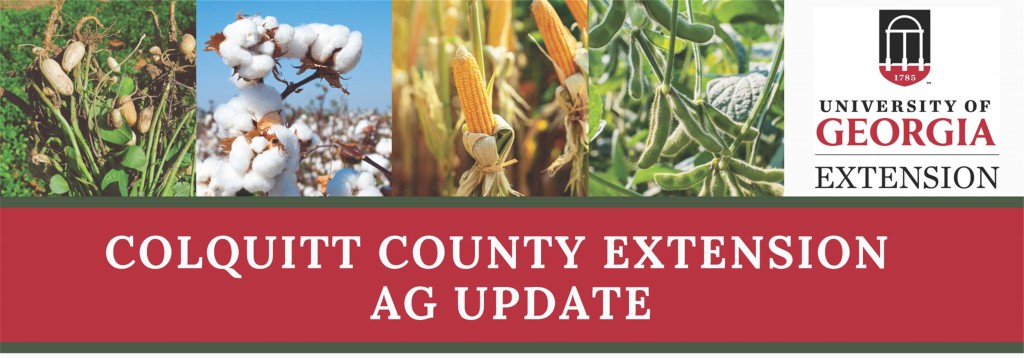
June 2021 Cotton Team Newsletter
June Mid-Season Cotton Irrigation Update
(David Hall and Wes Porter)
The only thing for certain in farming is that there are no two years the same. May of 2021 brought us some very hot and dry weather. Some of these conditions put our crops at points of stress, especially in dryland or non-irrigated scenarios. Fortunately, the beginning of June has brought some rain across most of the state. A majority of these showers have come well-timed, and in appropriate amounts. Luckily, we have sporadic rainfall events predicted in the long-term forecast for most of June too.
Cotton planting has been scattered over the past two months. Some areas were able to take advantage of warm streaks during April and into May, while in other areas it was much too wet to start planting. Then, as earlier mentioned it went to hot and dry very rapidly. Keeping this in mind, cotton growth stages are varied from near squaring to just emerging. Our Irrigation Reference Guide for Corn, Cotton, Peanuts, and Soybeans | UGA Cooperative Extension shows estimated water needs in both days planting and estimated growth stage, based on the physiological progression of the crop it may be better to look at the growth stage and not the DAP. Now is a good time to review the cotton irrigation schedule, determine where you currently are and decide what your water requirements are.
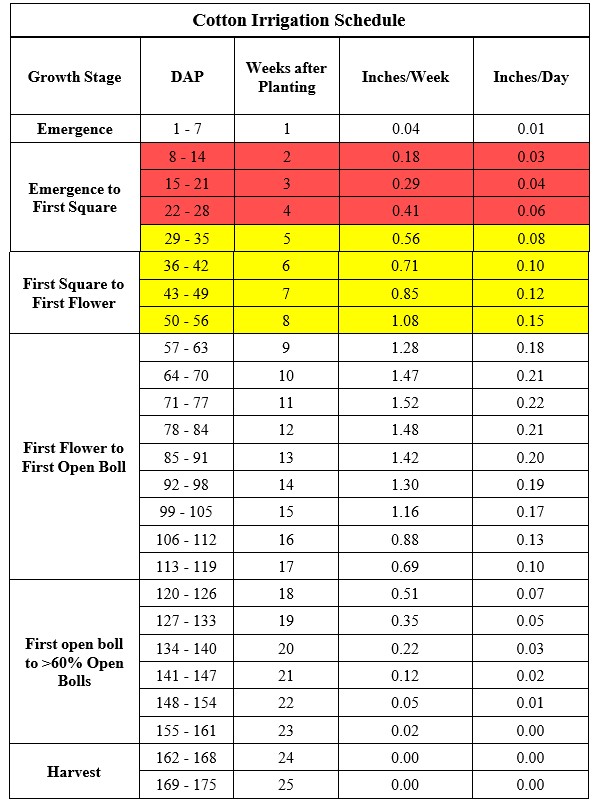
Based on planting observations and where most of the crop is, most farmers should fall within the first square to first flower stage (or the yellow highlighted area) throughout the month of June. If you were unfortunate and did not get your cotton planted until later May or early June then you will fall into the emergence to first square stage (highlighted in red). Crop water requirements increase dramatically from squaring and flowering. From 30 days to 50 days after planting, water consumption almost doubles. Keep this in mind as we move into middle and late June, and into early-July. Don’t fall behind on your irrigation once the crop reaches squaring and into flowering. As a reminder don’t forget that typically as water use increases is in late-June through July, usually so does very hot and dry weather, so keep this in mind and stay on top of your irrigation applications. Conversely, don’t over-irrigate the crop as there are yield penalties for doing this. Please keep in mind, if you have been using soil moisture sensors and you have “weighted” your sensors as discussed in the last newsletter, do not forget to change the weighting to reflect
current crop water use in the profile. Root growth has dramatically increased downward and we now need to be more balanced with our sensor readings.
One last consideration, top dressing all cotton and our first dose of growth regulator on aggressive irrigated growing cotton will soon or has already taken placed. Don’t go into this stage with the mindset of “I’m going to hold back on the water now because I don’t want it to take off”. If proper growth regulator is applied, it will prevent vegetative growth as it should. If rain chances are low, irrigation will be required to get the fertilizer in the plant by irrigating it in and allowing the plant to uptake the nutrients.
June Nematode and Disease Update (Bob Kemerait):
Once the furrow is closed after decisions for management of nematodes and seedling diseases have been made, and prior to first-bloom when growers should weigh the necessity of protecting a crop from target spot and areolate mildew (Ramularia leaf spot), cotton growers give most of their attention to weed and insect management, soil fertility, and irrigation. Still, in that time between closing the furrow and the opening blooms, opportunities for disease and nematode management do exist that should not be ignored. These opportunities include the following.
Looking for what you can’t do anything about this year but you might do differently next year:
- Nematodes: observe the field for areas of poor growth and stunted plants. Closely examine the root- systems for presence of gall that indicate damage from the southern root-knot nematodes (Picture credit: Jeremy Kichler); take soil samples to determine the presence or absence of root-knot nematodes, sting nematodes, reniform nematodes, or Columbia lance nematodes.
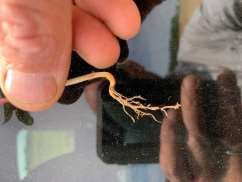
- Fusarium wilt: Watch fields for stunted, often-wilted plants. Leaves may show yellowing and marginal necrosis. In severe cases, young plants may die quickly. Split the lower stem and look for vascular discoloration. All of these symptoms together are strong indication that the crop is affected by Fusarium wilt. As Fusarium wilt in Georgia is always a combination between a fungus and nematodes, growers are advised to take soil samples for nematode analysis as well. (Pictures from Eddie Beasley and Jeremy Kichler).

What to look for that you CAN do something about:
- As first-bloom approaches, growers are advised to scout for early symptoms of target spot and areolate mildew (Ramularia leaf spot) that may occur, especially in the lower canopy.
- Growers are advised to watch for early symptoms of potassium deficiencies in the leaves of the cotton plant. Potassium deficiency in the primary reason Stemphylium leaf spot can become an issue. Caught early enough, there may be opportunities to correct potassium deficiencies.
Spray Considerations
(Simer Virk, Eric Prostko, and Wes Porter):
Timely and effective pesticide applications are important for growers to stay on top of pest control throughout the season. Achieving desired spray coverage and efficacy while keeping off-target movement of pesticides to a minimum can be a challenging but an important consideration for growers. Spray applications resulting in too little or too much pesticide, ineffective coverage, or off-target movement can have serious consequences. Below are several things to consider for growers to help keep the product on target when applying pesticides with boom sprayers:
Nozzle Selection: Nozzle type affects sprayer output (gallons per acre), uniformity, coverage and drift. Make sure to check pesticide labels for recommended application rate, droplet size, and conditions needed to safely apply the pesticide. Consult the manufacturer’s nozzle catalog for selecting the nozzle that provides the desired output (flow rate and droplet size) specific to the application. Nozzle selection will also depend on the ground speed and pressure required to achieve the rate in gallons per acre.
Spray Pressure: Spray pattern and droplet size changes with pressure. Lower pressures result in larger droplets whereas higher pressures produce smaller droplets for a given nozzle size. For most applications, it is recommended to maintain a spray pressure (generally 30 – 50 PSI) that results in medium to coarse droplets to reduce drift while still providing adequate spray coverage.
Ground Speed: Application speed plays an important role in achieving the desired application rate. A higher travel speed will require a higher nozzle flow rate to achieve the given application rate and vice-
versa. It is recommended to reduce the sprayer speed (less than 10 mph) to obtain a consistent and more uniform coverage. Faster speeds will cause excessive boom bounce sending finer droplets higher in the air and increasing potential for drift.
Boom Height: Boom height influences overlap and uniformity of spray application at a selected nozzle spacing and spray angle. Lower boom height (20 – 30 inches from the target) is generally recommended for maintaining a proper spray pattern and overlap to achieve satisfactory coverage while reducing drift. Make sure to use nozzles that have a 110-degree angle to allow spraying at lower boom heights without effecting spray coverage.
Environment: Weather conditions such as wind speed and temperature also play a role in achieving the desired spray coverage and on-target application. High wind speed affects spray coverage and also results in greater drift. Wind direction should be also considered to avoid spraying towards sensitive crops, homes, etc. Warmer temperatures can also increase off-target movement of pesticides, especially at higher boom heights. To minimize off-target movement, avoid pesticide applications when conditions for temperature inversions are favorable.
Sprayer Calibration: Proper sprayer calibration is important to verify the nozzle output (gallons per minute) and consequently application rate (gallons per acre) based on the selected ground speed and nozzle spacing. During calibration, make sure to check all the nozzles for application uniformity across the whole boom, and for any leaks or uneven spray patterns.
Spray Technology: Spray technologies such as rate controller and section or individual nozzle control can be utilized to minimize variations in application rate and coverage. Advanced technologies such as PWM (pulse width modulation) nozzle technology and automatic boom height control is also currently available for use on spraying equipment for better application control and drift reduction.
Cotton Aphid Management (Phillip Roberts)
Cotton aphid is a fairly consistent and predictable pest of cotton in Georgia. Aphids feed on plant juices and secrete large amounts of “honeydew”, a sugary liquid. The loss of moisture and nutrients by the plants has an adverse effect on growth and development. This stress factor can be reduced with the use of an aphid insecticide. However, research conducted in Georgia fails to consistently demonstrate a positive yield response to controlling aphids. Invariably, some fields probably would benefit from controlling aphids during some years. Prior to treatment, be sure there is no indication of the naturally occurring fungus in the field or immediate vicinity. Also consider the levels of stress plants are under, vigorous and healthy plants are able to tolerate more aphid damage than stressed plants.
Aphids will typically build to moderate to high numbers and eventually crash due to a naturally occurring fungus, Neozygites fresenii. This fungal epizootic typically occurs in early to mid-July depending on location. Once the aphid fungus is detected in a field (gray fuzzy aphid cadavers) we would expect the aphid population to crash within a week. Typically, the fungus starts in the southernmost counties of southwest Georgia and moves north and east in time.
Cotton aphids also vector or transmit Cotton leafroll virus (CLRDV). During 2019 and 2020 aggressive control of aphids (weekly sprays) did not reduce the incidence of CLRDV. However, aggressive aphid sprays did flare spider mites in these trials.
A closer look at a cotton aphid infested leaves and identification of the cotton aphid fungus (Neozygites fresenii) and other interesting things:

Figure 1. Cotton aphid fungus present and aphids are crashing. Note the gray fuzzy aphids which is indicative of the fungus. Also note the aphid cast skins which are white in color; aphids molt or shed their exoskeleton (skin) as they grow.
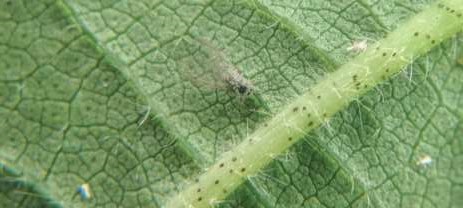
Figure 2. Zoomed in on a fungus killed winged aphid. See the fungal growth and sporulation.
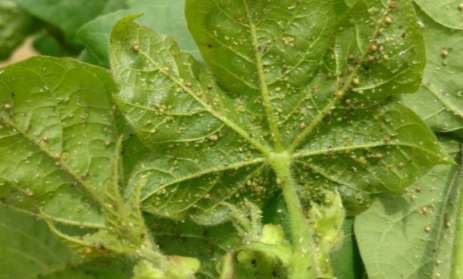
Figure 3. No fungus in this infested terminal. The brown balls (aphid mummies) are aphids which have been parasitized by a small wasp. Also, lots of aphid cast skins in this pic.

Figure 4. Four leaf cotton with a heavy aphid infestation. Note the high number of winged aphids which invaded this field. If aphids slow seedling growth that may delay maturity which could be an issue on late planted cotton. No fungal infected aphids in this pic.
Agronomic Update (Camp Hand):
In many parts of the cotton producing regions of Georgia, the last two to three weeks of May were particularly harsh relative to planting conditions. Temperatures quickly escalated, soil moisture left, and little rainfall occurred for two to three weeks. I was getting many calls about “dusting” cotton in because the general feeling was that our backs were against the wall. But over the last two weeks, we have been fortunate in that across the cotton producing regions of our state there has been a good amount of rainfall, with the majority of that occurring in the past week (Figure 1). This was very much needed, as some of our dryland acres and double-cropped cotton needed moisture to be planted and have the best chance to achieve an optimal stand. Although we still have a few acres to be planted, I feel good about where we are.

I have been hearing very little about replants thus far, with many folks telling me it has only happened on 5 to 10% of the acres in their counties. Time will tell with some of the acres that were planted in the harsh conditions discussed above, but we are now getting into “crunch time”. In general, based on previous research done at the University of Georgia, yield penalties can occur for cotton planted after the first week of June
Now it is time to shift from planting into growth management. Some of our earlier planted cotton is now beginning to square, with USDA reporting that nearly 10% of the crop in GA is squaring. Prebloom PGR applications may be necessary for aggressive varieties with high growth potential (i.e. high fertility, irrigated, etc.). A major key to plant growth regulation is timeliness, as it gets more difficult to regulate cotton growth the bigger the plant gets.As always, your local UGA county agents, along with myself and the other specialists, are here to help. Please reach out to them with any questions you may have.
As always, your local UGA county agents, along with myself and the other specialists, are here to help. Please reach out to them with any questions you may have.
Thank you, for your time please contact your local UGA extension agent with any questions.
Thank You,
Jeremy Kichler
229-921-1977
